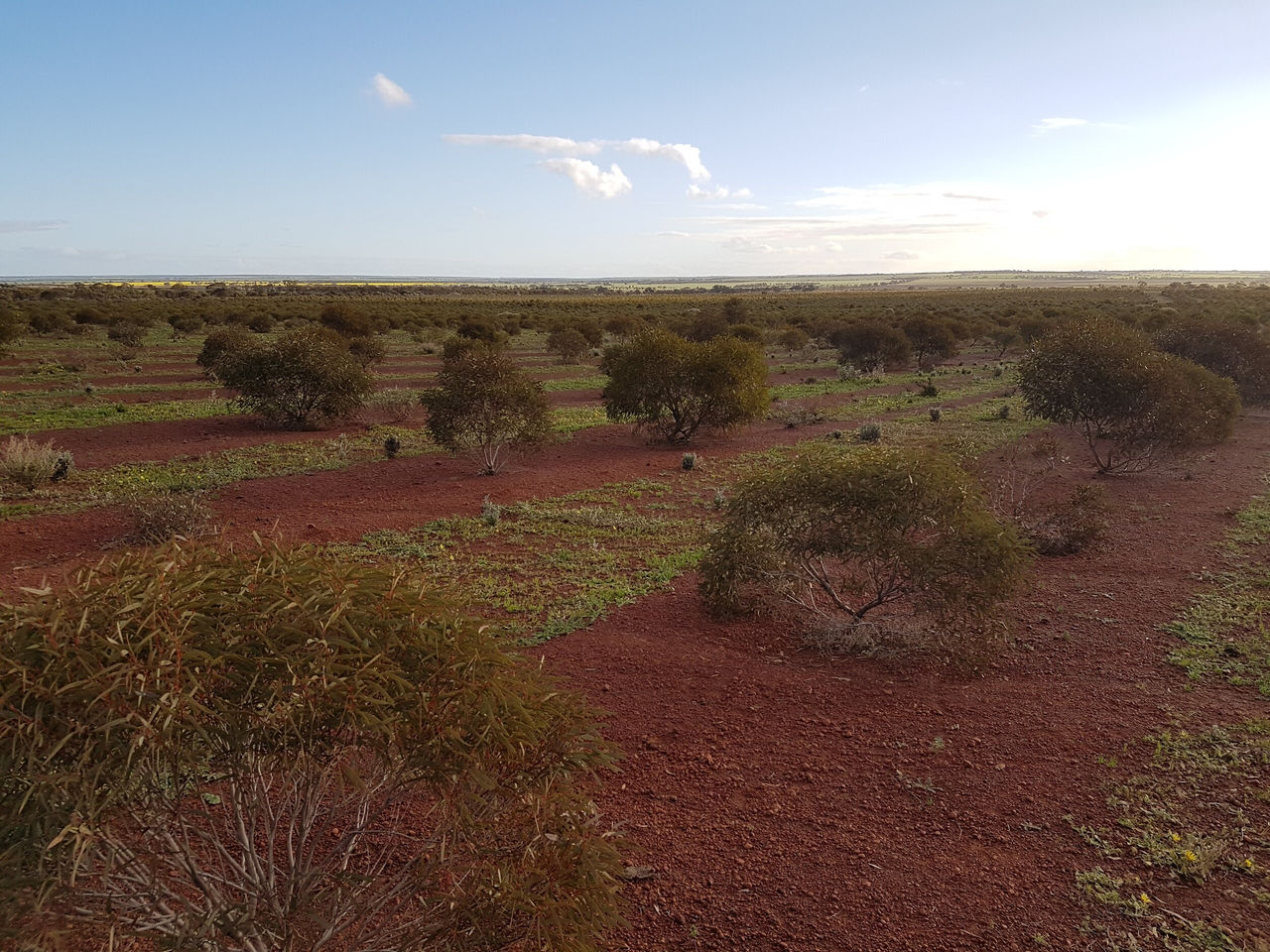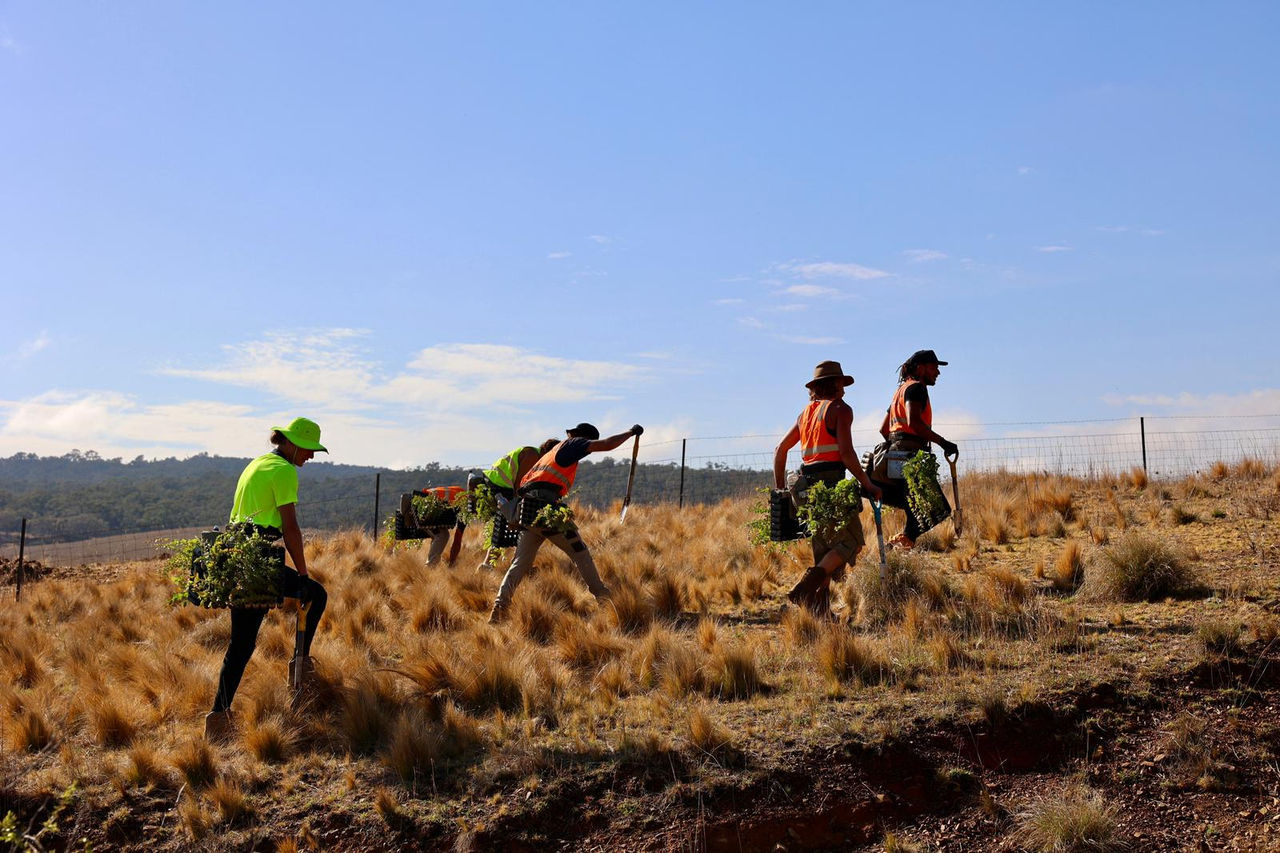21 August 2025
June 13, 2025
Developer insights: carbon projects tipped to follow renewables path to scale
Australian carbon project developers see a maturing of institutional financing as key to scaling the market and taking it on a similar trajectory as renewable energy.
By Corporate and Institutional Banking
Cash flow certainty from long-term carbon offtake agreements coupled with today’s reformed regulatory environment will help further unlock institutional lending to the carbon market as it follows a pathway to renewable energy-style project financing.
This is the view of active carbon project developers NAB canvassed recently to better understand the role banks can play to help achieve greater scale for the sector.
“The carbon market will evolve into an infrastructure-type market which will be very similar to renewables in the way it is financed,” Silva Capital’s Co-Managing Director Raphael Wood says.
“We are probably five years away from the carbon market getting to that point though, and another five to ten years away for the nature repair market.”
Participants like Silva Capital aim to generate tradable Australian Carbon Credit Units (ACCUs) through a range of approved methods, with each credit representing one tonne of CO2 equivalent avoided or removed from the atmosphere[i].
ACCUs can be used for offsetting emissions, which should be carried out as part of a credible hierarchy of transition planning that prioritises investments in avoiding or reducing emissions first.
The ACCU Scheme is administered by the Clean Energy Regulator, which helps maintain market integrity by ensuring the legislated methods used to generate each unit are underpinned by the best available science[ii].
Some of the methods use sustainable agriculture and vegetation management, with many farmers and landholders now getting involved to help generate additional income streams or to offset their own emissions.
The integrity of the ACCU Scheme has also been subject to public debate over the effectiveness of some methodologies, including going through an independent review in 2022[iii]. Implementation of panel recommendations and other reforms is ongoing[iv] but changes have included preventing new avoided deforestation projects and adding extra checks on the human-induced regeneration methodology[v].
While the review found the Scheme was sound, recommendations aim to clarify governance, improve transparency, facilitate positive outcomes and co-benefits to ensure ongoing integrity and alignment with evolving best practice.
Carbon capital stack
As Australia’s largest lender to agricultural businesses[vi], NAB is already active in funding carbon projects through mortgage lending secured by property, with the loans generally serviced by both agricultural and carbon cash flows.
But the consensus view of market participants canvassed by NAB is that while funding has come a long way over the past decade, bank debt for carbon project development is generally not yet efficient or available at an institutional scale.
Instead, along with the existing agricultural-based mortgage funding support, debt financing for carbon projects today is primarily made up of prepayment structures, where a counterparty provides an upfront payment to secure future ACCU supply at agreed prices. Equity financing is also used – whether at a project, corporate or fund level.
Wood says that while carbon projects are typically much smaller than renewable energy projects, there are clear parallels which point towards the emergence of bank debt-led project finance-style arrangements. These parallels include long project life, predictable revenue streams from long-term offtakes and reputable counterparties – all features which have been relied on by financiers backing renewable energy projects over the past two decades.
“The carbon market really has matured to the point where it is investment grade, particularly for private equity players who have been active in the space, along with a range of corporates,” Wood says.
The eventual goal is to move the carbon market to a state where de-risked offtake-backed projects become “almost bond yield”, which he adds will require forms of insurance that protect against on-the-ground project risks such as fires and floods.
Challenges that remain include certainty around the available methodologies, delivery risk, reversal risk, along with other forms of political and regulatory risk, Wood says.
Despite this, he sees 2023’s reformed Safeguard Mechanism,[vii] which requires Australia’s heaviest emitters to reduce emissions below a lower baseline level, as the “sledgehammer” the market needed to drive corporate demand and support market certainty.
As an example, Silva Capital has launched a $250 million nature-based carbon credits fund backed by BHP, Rio Tinto and Qantas – all Safeguard Mechanism-captured entities needing ACCUs to offset emissions that exceed their baseline level. The 25-year fund with a seven-year lock-up period aims to develop and invest in agricultural properties to generate ACCUs using the environmental plantings method which restores cleared land and biodiversity alongside grazing on site[viii].
“We’re certainly here to test innovation that supports lending at scale,” Wood says.
Financing gap
For another market participant, Corporate Carbon, the business model operates as being both the landowner and project developer, after starting initially as an advisory in 2010.
Chief Commercial Officer Marc Train says the focus is on building a portfolio of carbon projects on balance sheet, augmented by agricultural revenue streams. This allows for mortgage lending in the mix, but there is still a significant gap to fund the carbon project development through either prepayments or equity.
Train notes the developers he sees in market are mostly using prepayments to get debt financing in place and agrees the debt funding options today remain relatively vanilla.
Like Wood, he says the market is missing an evolved structure that values carbon projects and their revenue streams as underlying assets distinct from other agricultural property and activity.
“Ideally, this market develops to a point where banks can take a proper project financing approach involving financing off the back of carbon offtakes rather than taking a balance sheet view, which is where we are today,” Train says. “This however would require more certainty on methodologies, yields and outcomes.”
He also notes insurance as a key catalyst to making the carbon market more investable for debt financiers.

Image: Corporate Carbon Western Farm Trees Environmental Planting Project in the Western Australian Wheatbelt
Credible offtakes
For carbon developer Permagen, the business focus is on environmental plantings projects funded through a combination of mortgages over the land, prepayment structures with an offtaker or a bank with a competitive cost of funding, as well as equity investments.
Permagen General Manager Michael Ho and Director Ben Guo say their carbon projects involve planting native trees on rural land integrated with agricultural business. They say these projects are initially capital intensive until the trees become highly-productive assets offering stable cash flows over the longer-term. Assuming the trees grow, the carbon yield is relatively predictable, meaning a portfolio of these projects are well suited to long-term offtake.
Ho and Guo are aligned with the other developers on the parallels between carbon projects and renewable energy projects and are optimistic the market will evolve accordingly.
“There is a future for project finance-style arrangements in the carbon market,” Ho says. “A hurdle will be the size of the projects. Each carbon project on a relative scale is smaller than your typical renewables project, so it doesn’t really make sense yet to do project finance for a $10 to 20 million carbon project.”
Guo emphasises the importance of longer-term offtakes with reputable counterparties for long-term pricing as being key to accessing project finance-style arrangements. “For emitters with significant Safeguard Mechanism obligations, who have a very clear line of sight on what they require until 2030, there’s an increasing willingness to enter into offtakes today,” he says.

Image: Permagen Boloco Reforestation Project in Beloka, regional New South Wales
Game changer
Of the priority ACCU methods currently being developed[ix], it is Integrated Farm and Land Management (IFLM)[x] that carbon developer Climate Friendly describes as a potential “game changer” in achieving greater scale for carbon projects.
Chief Investment Officer Mitchell Board says this is because IFLM allows for a variety of ways to generate ACCUs on a property, such as blending soil carbon with revegetation for instance, and opens up the field to more players.
“Projects become viable once you can do more with your property,” Board says. “What IFLM represents is scalability in terms of the various agricultural businesses that can participate.”
Climate Friendly operates under a service provider model, partnering with land managers, farmers and traditional owners who remain the project proponents. Under this model, proponent partners typically manage their own financing, Board says. However, he is seeing prepayment structures with emitters and other parties looking to lock in ACCU supply.
Board says Climate Friendly is increasingly looking at more capital-intensive methodologies as integrity standards lift. As the measurement process moves from a largely modelled approach to one using sophisticated and expensive technologies to capture baselines and data, carbon projects will start to require more innovative financing structures, he says.
“Banks like NAB with a strong agricultural customer base are well-positioned to bridge the institutional financing gap,” Board says.
Carbon trading support
In addition to agribusiness lending support, NAB also provides access to ACCUs and other environmental products through the NAB Carbon Trading Desk.
NAB’s Global Head of Carbon Trading Ben Jackson says the bank recognises carbon products as having an important role to play in helping customers with their climate ambitions, particularly for those operating in hard-to-abate industries[xi].
“As part of the market’s evolution, NAB is interested in supporting customers with greater choice in funding and risk management solutions for carbon projects. As we’ve seen through the bank’s global support for renewables energy generation, taking a project finance-style approach can be effective in achieving a step-change in industry output.
“Given NAB’s strong Agri franchise, being involved in the carbon market aligns with many of our customers’ objectives, though we recognise the positives that the ACCU Scheme brings to both buyers and developers of ACCUs.
“The advent of proponent-led methodologies in the ACCU Scheme is likely to lead to more innovative carbon project opportunities and we’re eager to continue evolving NAB’s capabilities in this sector to better service our customers and the Australian carbon market.”
NAB also recently announced details of how businesses and landholders can secure discounts on new green finance through the bank’s partnership with the Clean Energy Finance Corporation (CEFC), including a 1.15% discount to support eligible ACCU-generating reforestation projects.
Together with NAB, the CEFC will provide $300 million in capital to back discounted interest rates for eligible business borrowers to invest in things like green vehicles and equipment and for eligible agribusinesses and landholders to reduce the emissions of their operations.
See NAB News for more information on the announcement., opens in new window
[i] Australian carbon credit units | Clean Energy Regulator, opens in new window
[ii] Ensuring deep, liquid, transparent and accessible carbon markets in Australia discussion paper – Clean Energy Regulator, opens in new window
[iii] Independent Review of ACCUs 2022 – DCCEEW, opens in new window
[iv] Implementing reforms to the ACCU Scheme – DCCEEW, opens in new window
[v] Third independent review of human-induced regeneration gateway checks | Clean Energy Regulator, opens in new window
[vi] NAB-RA-Horizons-Report-2024.pdf (PDF, 6MB), opens in new window
[vii] DCCEWW Safeguard Mechanism, opens in new window
[viii] silvacapital.com.au – High Integrity Carbon Origination, opens in new window
[ix] Methods for the Australian Carbon Credit Units (ACCU) Scheme – DCCEEW, opens in new window
[x] Proposed Integrated Farm and Land Management method – DCCEEW, opens in new window
Corporate and Institutional Renewable energy


